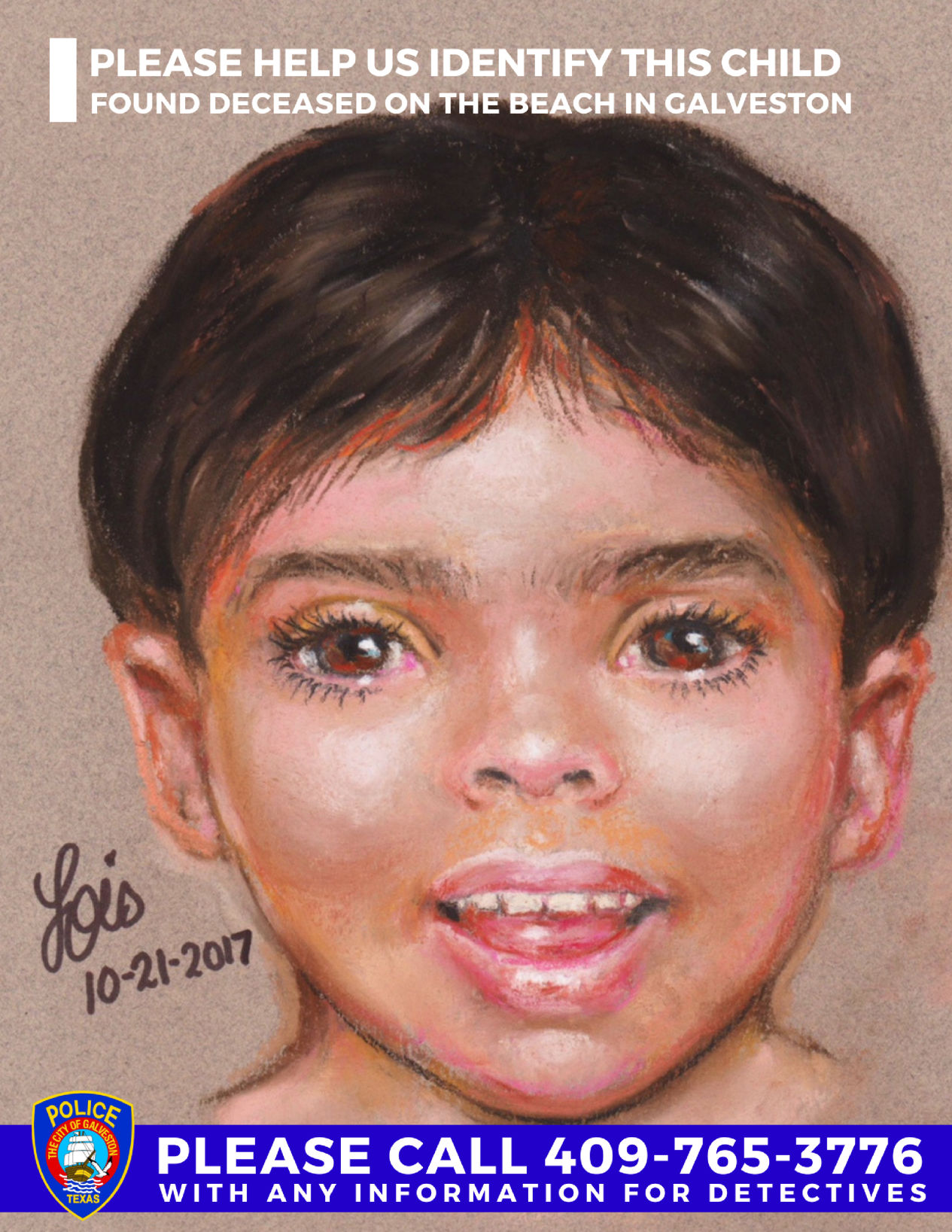DALLAS (AP) — Police are sifting through hundreds of tips and leads to discover the name of a little boy whose body was found on a beach in Southeast Texas last week. It’s the second time in a decade that
DALLAS (AP) — Police are sifting through hundreds of tips and leads to discover the name of a little boy whose body was found on a beach in Southeast Texas last week. It’s the second time in a decade that residents and law enforcement in Galveston have struggled to identify a lifeless child found on the shores of their beach community.
The Galveston Police Department is working with federal and state agencies in a national search for the young Hispanic boy’s identity — and to find out why no one has reported him missing.
“We’re waiting on the medical examiner’s report to determine a cause of death. But we’re working with the FBI now, as well as other federal and state agencies to really strategize the best way to move forward with the investigation,” said Galveston police Capt. Joshua Schirard. “We’ve gotten probably close to a thousand tips from the news stories and social media posts that have been out there. We’re hopeful we’ll have more information soon.”
It took only a few days after police released a composite sketch nationally for a relative to identify the little girl nicknamed Baby Grace whose body was found in late October 2007 by a fisherman on the beach of an uninhabited island off the coast of Galveston. Lois Gibson, the forensic artist who drew the little girl identified later as 2-year-old Riley Ann Sawyers, drew the unidentified boy for a sketch released nationally earlier this week.
The Hispanic boy weighed about 30 pounds, was between 3 and 5 years old and was about 3 feet tall. Gibson said the child’s big brown eyes and long eyelashes will stick with her until police have answers, including knowing his name.
“There is this feeling while this little boy isn’t unidentified. I don’t know what else I can do and I’m hoping (the portrait) will help. That’s why I did the drawing Saturday night. It couldn’t wait,” Gibson said. “I just want to tell whoever knows this little boy, just come forward. Just let us know, let us help work this out. Somebody knows.”
Gibson has drawn more than a thousand suspects and age-progressed portraits as part of her job as a forensic artist at the Houston Police Department. She’s drawn roughly six portraits of children whose bodies were found in the last 35 years and didn’t match any missing person reports. All of them have been identified, she said. Some took months to name after she drew them. Others, like Baby Grace, only took days.
Gibson said she was at a restaurant with her daughter when a police officer, who knew her from a 2001 case of an unidentified little girl that wasn’t solved until seven months after her drawing, called to tell her detectives had identified Baby Grace as Riley Ann Sawyers.
A month after the discovery of the girl’s body, police arrested her mother, Kimberly Trenor, and stepfather, Royce Ziegler Jr., of Spring, Texas. They were convicted of capital murder in her beating death.
Police said the couple had put Riley Ann’s body in a storage container, where it stayed for nearly two months, and then Ziegler threw the container off of the bridge that connects Galveston to mainland Texas.
Gibson is hoping, along with the rest of the community, that answers will come as quickly in the case of the boy.
The National Center for Missing and Exploited Children checked the boy’s description against missing person reports nationwide, and after not finding a match, began featuring Gibson’s drawing earlier this week on a poster.
“We have over 700 unidentified child cases dating back many years. But finding a child of this age, with no missing persons report is unusual. It tells us something about who may have been responsible for this child’s care,” said Robert Lowery, vice president of the center who oversees the missing children division. “Every year, there are about 465,000 missing children reports and just a handful of these cases. They are heartbreaking cases.”
Both Lowery and Schirard, the police captain, said public engagement is the key strategy for now.
Police are not ruling out that he may have been in the U.S. without legal status or was from another country. They have opened an anonymous tip line and other agencies have reached out to the Mexican Consulate in Houston to create ways to generate tips from immigrants who don’t have legal status and might not be comfortable talking to investigators or leaving their names.
“Non-documented persons are reluctant to engage police, typically, for fear of deportation, but we need to appeal to anyone who might have information to either talk to law enforcement anonymously or call the Mexican Consulate,” Lowery said.
Police have also talked with the Coast Guard and U.S. Customs officials. Schirard said shipping vessels anchor a mile or so offshore from the island before traveling up the channel to the Port of Houston.
“About once a month we find narcotics washed up on shore, likely because people get spooked when authorities board a ship. It’s not outside the realm of possibility that the same may happen with a person,” Schirard said. “We’re not saying that is what happened; we’re saying we aren’t ruling anything out until we’re positive we know what did happen.”


